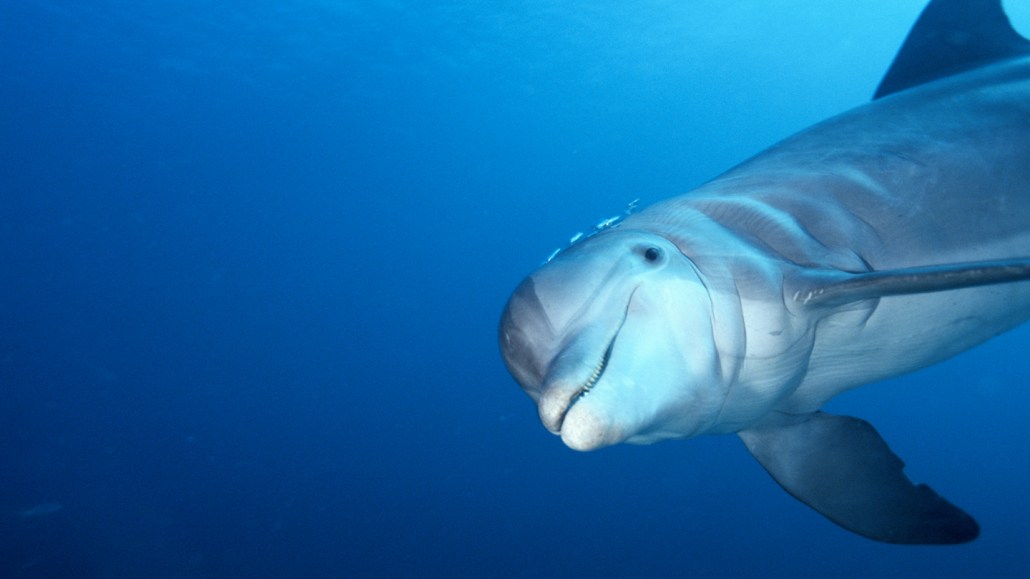
The similarities between the human and dolphin clitoris suggest the cetaceans experience sexual pleasure, which may explain why the species is so randy all the time.
Stuart Westmorland/Getty Images Plus
- More than 2 years ago
Dolphins have active sex lives, with frequent dalliances not just for reproduction. One reason may be that the prominent female dolphin clitoris provides sexual pleasure.
A new up-close look at clitoral tissue from common bottlenose dolphins (Tursiops truncatus) reveals many similarities to the human clitoris. Abundant sensory nerves and spongy tissues in the genitalia of our female flippered friends suggest the dolphin clitoris may be highly sensitive to physical contact, researchers report January 10 in Current Biology.
The findings suggest that the bottlenose dolphin clitoris likely provides pleasure during sex, which adds up since dolphins have sex all the time, says Patricia Brennan, an evolutionary biologist at Mount Holyoke College in South Hadley, Mass.
Heterosexual and homosexual sex is common in wild dolphins, including female-female sex. “What that looks like is females stimulating each other’s clitoris,” with snouts, flippers or flukes, Brennan says. Females also masturbate by rubbing their clitoris against objects on the sea bottom.
Like female reproductive anatomy generally, the clitoris — in many species, not just dolphins — is poorly studied in contrast to male genitalia. The first rigorous study of clitoral anatomy in humans wasn’t published until 1998.
During Brennan’s recent research on dolphin vaginal anatomy, the large size of the common bottlenose dolphin clitoris aroused her curiosity (SN: 12/15/17). The paucity of prior research prompted Brennan and colleagues to examine the organ and look under the hood — including under the wrinkled clitoral hood — an area of enlarged erectile tissue near the vaginal entrance where contact and penile stimulation during copulation is likely.
Excising the clitorises from dolphin specimens that died of natural causes, Brennan’s team found that the dolphin clitoral body is supplied by abundant large nerves at the skin surface. “So just like humans,” she says, “these are areas of high sensitivity.”
CT scans and dissection also revealed many structural features similar to the human clitoris, though differing in shape and with more spongy tissues. Like in humans, the dolphin clitoris has erectile bodies with dense layers of connective tissue, comprised of collagen and elastin fiber that maintains structural integrity under pressure. The team also found genital corpuscles, encapsulated sensory nerve endings called “corpuscles of pleasure” in humans.
Clitoral shape also differs between young and adult dolphins, the researchers report. Juvenile females have a C-shaped clitoris, whereas it is larger and S-shaped in reproductively mature females. These bendy shapes, Brennan predicts, represent a relaxed rather than engorged state. “When that tissue fills up with blood, it’s going to straighten up,” she explains.
These new findings are “striking but not surprising,” notes Teri Orr, a physiological ecologist at New Mexico State University in Las Cruces who was not involved in this study. Orr, a former postdoc of Brennan, studies genitalia across species. Like bonobos and chimps, she says, dolphin group dynamics involve bonding and pleasure-seeking through sex.
However, there are at least two other potential hypotheses for the evolution of an enlarged clitoris in female dolphins, Orr says. The thicket of nerves supplying the clitoris may reflect its shared embryological root with the penis in males. During development both arise from the same types of tissues, and the penis is also well-supplied with nerves, so it’s not too surprising that the clitoris is as well.
Additionally, although modern dolphins do not have ovulation that is induced by an external stimulus, in dolphin ancestors, clitoral stimulation could have played a role in stimulating ovulation, Orr speculates. Across species, theories abound about why female clitoral stimulation can lead to orgasm, and perhaps pleasure and fertility coevolved.
With a historical and persistent gender bias in reproductive biology research, there is much about female sexuality in all species that we still don’t know. Dolphins “might have something to tell us about ourselves,” Brennan says. “We have a lot to learn from nature.”





